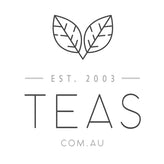Lapsang Souchong Tea as Possum Repellents
Posted by TEAS AU

Possum repellents may work through two chemical senses: smell and taste. In addition, some repellents are designed to repel because of their texture (“mouth feel”). Many substances have been used in the hope that they will stop possums eating garden plants. However, the Department of Sustainability and Environment is not aware of any definitively successful, universal repellent that will consistently deter possums from eating plants.

Tarry Lapsang Souchong
Some people believe that certain products or mixtures work and it may be that, in some circumstances, they do. Others claim that they have “tried everything” and that nothing stops their plants being eaten. A Deakin University study into 14 alleged possum repellents found that, when possums were hungry, none of the six taste repellents tested stopped possums eating food treated with the compounds, while five of 10 odour repellents appeared to have some effect.
We have listed below a number of compounds that were reported by some people to deter possums from their plants. The Department of Sustainability and Environment has no view on the effectiveness of any of these compounds, but lists them here in case people wish to test them to see if they offer any level of protection for their gardens. This list includes those products tested in the Deakin University study. The letters (S), (T) or (F) after the products indicates whether they are intended to repel by smell (S), taste (T) or feel (F). Directions for use are given where we have this information.
NB. Compounds that dissolve in water are likely to be removed by rain and should be reapplied after rain. It is wise to test any of these products on a small part of a plant, to see whether it causes any damage to the plant, before applying it more generally.
Charlie Carp® (S) (fish-based fertiliser): Spray/paint on plant stems or other parts to be protected.
Skunk-off® (S) (proprietary repellent product): Follow label instructions.
Phenyle® (S) (hospital strength antiseptic with strong smell): Spray on plant stems to stop possums climbing.
Tea-based deterrent (T): Boil 2 litres of water; add 4 heaped tablespoons of Lapsang Souchong tea; leave to cool, strain off liquid and apply from plastic spray bottle directly onto affected plants. Reapply every two weeks and always after rain. Make a fresh brew every time.
Indonesian fish sauce (T): Place one tablespoon of sauce in one litre of water and spray on foliage.
Garlic spray (S, T): Place two tablespoons freshly crushed garlic (a variation is to add two tablespoons of freshly crushed hot chilli) in one litre of hot water. Allow to stand overnight. Strain. Spray on foliage.
White King® (S): (household bleach): Apply full strength as spray.
Camphor (S) (household insecticidal fumigant): Crumble one 6.25 gram block and mix with enough Vaseline® to make paste that can be applied to fruit or stems.
Naphthalene flakes (S) (household insecticidal fumigant): Place 50 gram in pouch made from foot of panty hose and hang in tree or bush.
Quassia chips (T) (Chips of bark from a South American tree): Add 100 g chips to 2 litres water and heat for one hour before straining. Add one tablespoon detergent. Dilute at rate of 1 part of solution to four parts water and apply as a spray.
Blood & Bone (S) (Animal-derived fertiliser): Sprinkle around the base of plants to be protected.
D-ter® (S, T) (proprietary repellent product): Follow label instructions.
Keep Off® (S) (proprietary repellent product): Follow label instructions.
Stay Off® (S) (proprietary repellent product): Follow label instructions.
Scat® (S) (proprietary repellent product): Follow label instructions.
Tabasco Sauce® (T): Use full strength as paint or spray.
WR1 (F) This is a tactile repellent developed at the DSE/DPI Keith Turnbull Institute. WR1 is a two-part product comprising a sticker and grit that adheres to the sticker. Field testing has shown that this product can repel wallabies and may repel possums. Currently the product is awaiting registration and commercial availability may be some way off.
All of these products except for WR1 may be purchased either from your local supermarket or from a plant nursery.
Please contact us by email possum.comments@dse.vic.gov.au if you have experience of repellent methods that you believe are effective.
We will update this page periodically as we learn of methods that appear to have been effective.
(Department of Sustainability and Environment, Victoria)
TAGS:
SHARE:

AUSTRALIA'S FINEST LOOSE LEAF TEAS
Explore Australia's largest selection of Premium Teas & All-Natural Organic Herbal Blends.

